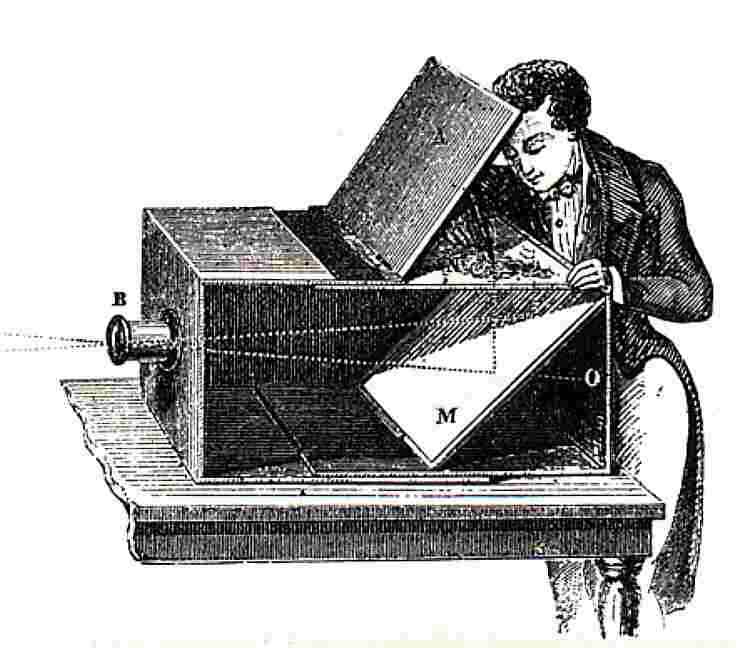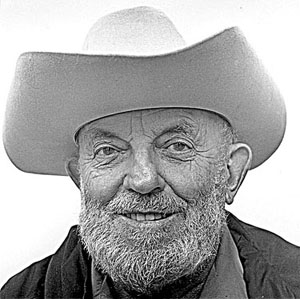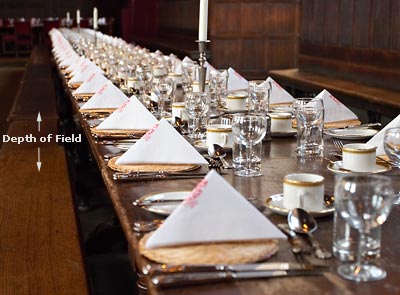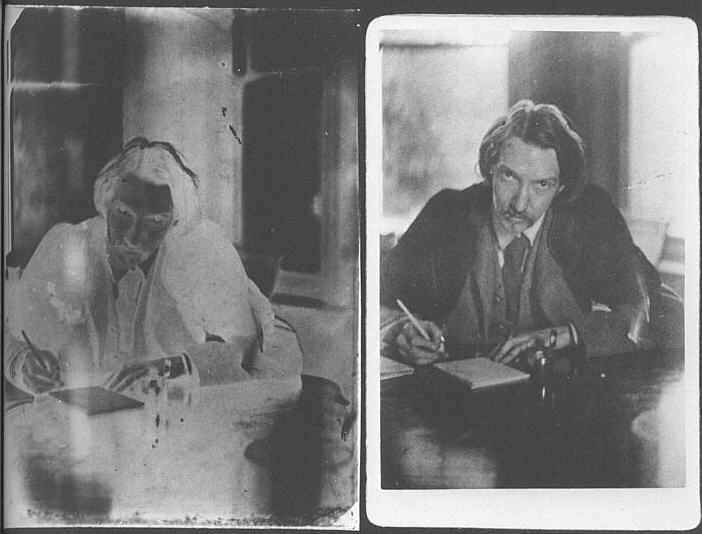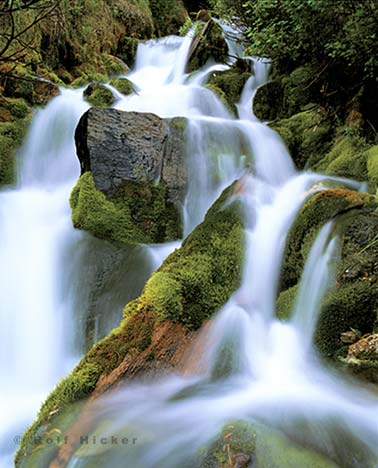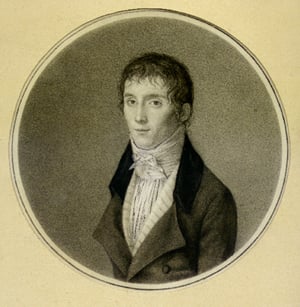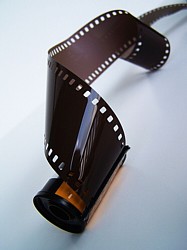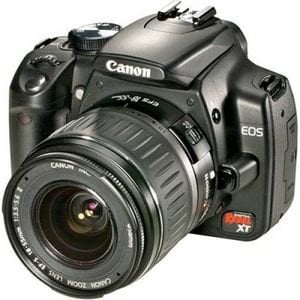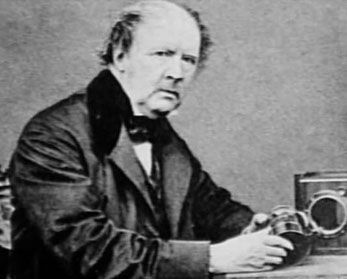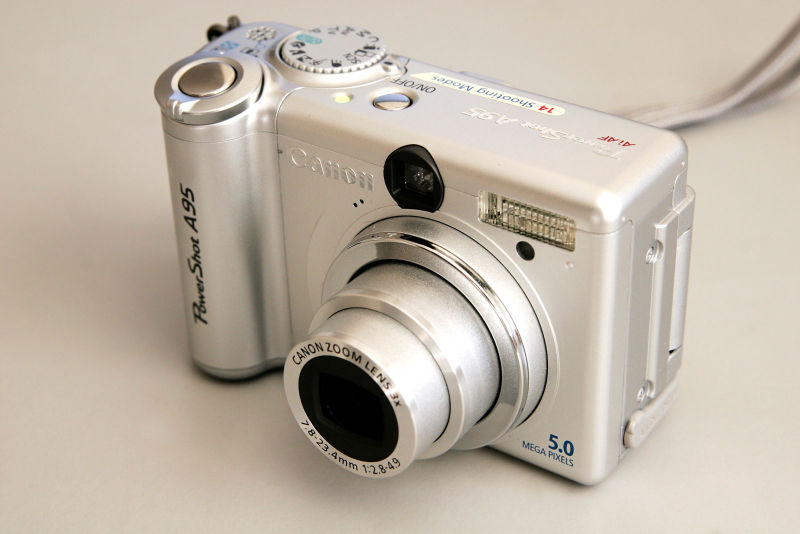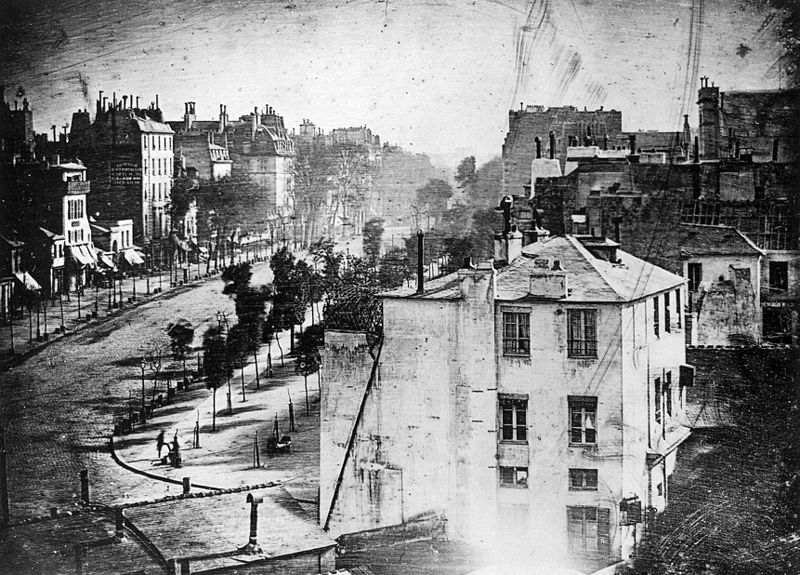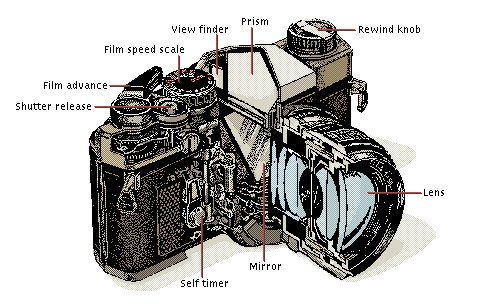Lhs History Of Photography Test

All Loudon High School students taking Digital Design and Imaging are required to take this test. You must have a password to login. You can take it 2 times on test day. To receive a passing grade you must make a score on 1 of the tests that is 85% or higher.
- 1.
The word photography is derived from Greek words photos and graphein which literally means what?
- A.
Drawing with Light
- B.
Frozen Time
- C.
Captured Light
- D.
Stop Motion
Correct Answer
A. Drawing with LightExplanation
The word photography is derived from Greek words photos and graphein, which literally means drawing with light. This refers to the process of capturing images using light and a camera. The term "drawing" implies the act of creating or capturing an image, while "light" represents the fundamental element used in photography to illuminate the subject. Thus, the term "drawing with light" accurately describes the essence of photography.Rate this question:
-
- 2.
You are using a regular film camera. You are photographing an outdoor table-tennis competition. Which would be the best film speed to use?
- A.
100
- B.
200
- C.
400
- D.
800
Correct Answer
D. 800Explanation
The best film speed to use for photographing an outdoor table-tennis competition would be 800. This is because a higher film speed allows for faster shutter speeds, which is important for capturing fast-moving subjects like athletes playing table tennis. Additionally, a higher film speed also provides better performance in low light conditions, which may be encountered during an outdoor event. Therefore, using a film speed of 800 would ensure that the action is captured sharply and with good exposure.Rate this question:
-
- 3.
ISO stands for
- A.
International Organization for Standardization
- B.
Integrated Sensor Operation
- C.
Illumination Sensitivity Output
Correct Answer
A. International Organization for StandardizationExplanation
ISO stands for International Organization for Standardization. This is a non-governmental organization that develops and publishes international standards. ISO standards are used to ensure quality, safety, and efficiency in various industries and sectors worldwide. The organization promotes global standardization and facilitates international trade by providing a common framework for businesses and organizations to follow. ISO standards cover a wide range of areas, including technology, manufacturing, healthcare, and environmental management.Rate this question:
-
- 4.
In what year was the first 35mm still camera developed?
- A.
1901
- B.
1913
- C.
1929
- D.
1935
Correct Answer
B. 1913Explanation
The correct answer is 1913 because it was the year when the first 35mm still camera was developed. This invention revolutionized photography by introducing a more compact and portable camera that used 35mm film, which became the standard format for many years. The development of the 35mm still camera opened up new possibilities for photographers and made photography more accessible to the general public.Rate this question:
-
- 5.
At what shutter speeds is a tripod generally required?
- A.
Less than 1/125 of a second
- B.
Less than 1/60th of a second
- C.
Less than 1/30th of a second
- D.
Greater than 1/250th of a second
Correct Answer
B. Less than 1/60th of a secondExplanation
A tripod is generally required at shutter speeds less than 1/60th of a second because at slower shutter speeds, there is a higher chance of camera shake or blurriness due to hand movement. Using a tripod helps to stabilize the camera and eliminate any unwanted movement, resulting in sharper and clearer images.Rate this question:
-
- 6.
"What type of photography is Ansel Adams most famous for?
- A.
Candid photography
- B.
Landscape photography
- C.
Fashion photography
- D.
Documentary photography
Correct Answer
B. Landscape pHotograpHyExplanation
Ansel Adams is most famous for his landscape photography. He is known for his stunning black and white images of the American West, particularly of national parks such as Yosemite. Adams had a unique ability to capture the beauty and grandeur of nature, using his technical expertise and artistic vision to create breathtaking compositions. His photographs often showcased dramatic landscapes, with a focus on capturing the play of light and shadow. Adams' work has had a significant impact on the field of landscape photography and continues to inspire photographers today.Rate this question:
-
- 7.
Which of the following is not a photography or graphics file format?
- A.
JPG
- B.
DOC
- C.
PNG
- D.
TIFF
Correct Answer
B. DOCExplanation
The correct answer is DOC because it is a file format used for word processing documents, not for photography or graphics. DOC files are typically associated with Microsoft Word and are used for creating, editing, and saving text-based documents, while the other options (JPG, PNG, and TIFF) are all commonly used file formats for storing and displaying images or graphics.Rate this question:
-
- 8.
What type of lens would give a wider depth of field?
- A.
35 mm
- B.
50 mm
- C.
100 mm
- D.
200 mm
Correct Answer
A. 35 mmExplanation
A 35 mm lens would give a wider depth of field compared to the other options. This is because a wider focal length, such as 35 mm, allows for a greater amount of the scene to be in focus, both in the foreground and the background. In contrast, longer focal lengths, like 50 mm, 100 mm, and 200 mm, have a narrower field of view and therefore a shallower depth of field, resulting in a more blurred background and limited focus range.Rate this question:
-
- 9.
Depth of Field is determined by:
- A.
The size of the aperture
- B.
The focal length of the lens
- C.
The distance between the camera and lens
- D.
All of these
Correct Answer
D. All of theseExplanation
The depth of field in a photograph refers to the range of distance that appears to be in focus. It is determined by multiple factors, including the size of the aperture, the focal length of the lens, and the distance between the camera and the lens. The size of the aperture affects the amount of light entering the lens and therefore the depth of field. The focal length of the lens also plays a role, as longer focal lengths tend to have shallower depth of field. Lastly, the distance between the camera and lens affects the perspective and therefore the depth of field. Therefore, all of these factors collectively determine the depth of field in a photograph.Rate this question:
-
- 10.
Which of the following are especially suitable for use in low-light photography?
- A.
Fast shutter speed.
- B.
Slow film (low ISO rating)
- C.
Telephoto lens
- D.
Wide aperture
Correct Answer
D. Wide apertureExplanation
Wide aperture is especially suitable for use in low-light photography because it allows more light to enter the camera, resulting in a brighter image. A wide aperture also helps to create a shallow depth of field, which can be useful for isolating the subject and creating a blurred background. Fast shutter speed, slow film (low ISO rating), and telephoto lens do not directly address the issue of low-light photography.Rate this question:
-
- 11.
Who invented the first negative from which multiple postive prints could be made?
- A.
Louis Daguerre
- B.
Henry Fox Talbot
- C.
George Eastman
Correct Answer
B. Henry Fox TalbotExplanation
Henry Fox Talbot invented the first negative from which multiple positive prints could be made. This invention, known as the calotype process, revolutionized photography by allowing for the production of multiple copies of an image. Unlike previous methods that produced one-of-a-kind images, Talbot's negative-positive process made it possible to reproduce photographs, making photography more accessible and widely available.Rate this question:
-
- 12.
In digital photography, having a camera with a larger number pixels increases the capability for doing what?
- A.
Using faster shutter speeds
- B.
Taking good pictures under different light conditions
- C.
Making larger prints
Correct Answer
C. Making larger printsExplanation
Having a camera with a larger number of pixels increases the capability for making larger prints because more pixels allow for a higher level of detail and resolution in the image. This means that when the image is enlarged, the pixels are spread out over a larger area, resulting in a clearer and more detailed print.Rate this question:
-
- 13.
Which camera settings will work best in achieving a soft, milky effect on moving water?
- A.
1/2second @ f/8
- B.
1/500 @ f/1.4
- C.
2 minutes @ f/8
Correct Answer
A. 1/2second @ f/8Explanation
A shutter speed of 1/2 second allows for a longer exposure time, which will capture the movement of the water and create a soft, milky effect. The aperture setting of f/8 ensures a sufficient depth of field, keeping both the foreground and background in focus.Rate this question:
-
- 14.
Which well known photographer worked for Rolling Stone magazine in the 1970's?
- A.
Annie Leibovitz
- B.
Helmut Newton
- C.
Norman Parkinson
Correct Answer
A. Annie LeibovitzExplanation
Annie Leibovitz is the correct answer because she is a well-known photographer who worked for Rolling Stone magazine in the 1970s. She is renowned for her iconic portraits of musicians and celebrities during that time period. Her work for Rolling Stone helped to shape the magazine's visual identity and capture the essence of the music and cultural scene of the 1970s.Rate this question:
-
- 15.
The first permanent photograph was an image produced in 1825 by the French inventor ..........
- A.
Joseph Nicéphore Niépce
- B.
Louis Daguerre
- C.
John Herschel
Correct Answer
A. JosepH NicépHore NiépceExplanation
Joseph Nicéphore Niépce is credited with producing the first permanent photograph in 1825. He was a French inventor who developed a process known as heliography, which involved using bitumen of Judea to create an image on a metal plate. This process required several hours of exposure time, but it resulted in a permanent image that could not be easily erased or destroyed. Niépce's work laid the foundation for the development of photography as we know it today.Rate this question:
-
- 16.
In 1889, .......... invented film with a base that was flexible, unbreakable, and could be rolled.
- A.
George Eastman
- B.
Hamilton Smith
- C.
Henry Fox Talbot
Correct Answer
A. George EastmanExplanation
George Eastman is the correct answer because he is known for inventing film with a flexible and unbreakable base that could be rolled. This invention revolutionized the film industry and made it possible to create movies and capture images more easily. Eastman's invention paved the way for the development of modern photography and cinematography.Rate this question:
-
- 17.
The first high quality 35mm camera was made by .........
- A.
Kodak
- B.
Bronica
- C.
Leica
Correct Answer
C. LeicaExplanation
Leica is the correct answer because it is widely recognized as the first company to produce a high-quality 35mm camera. Leica cameras revolutionized the photography industry with their compact size and superior image quality. They introduced the Leica I in 1925, which was the first commercially successful 35mm camera. Leica's innovative design and precision engineering set the standard for future camera manufacturers, making it the most appropriate choice for the first high-quality 35mm camera.Rate this question:
-
- 18.
Who was the inventor of the negative / positive photographic process, the precursor to most photographic processes of the 19th & 20th centuries?
- A.
Louis Daguerre
- B.
Henry Fox Talbot
- C.
James Clerk Maxwell
Correct Answer
B. Henry Fox TalbotExplanation
Henry Fox Talbot is credited with inventing the negative/positive photographic process, also known as the calotype process. This process involved creating a negative image on paper coated with silver iodide, which could then be used to produce multiple positive prints. Talbot's invention was a significant advancement in photography and laid the foundation for many photographic processes used in the 19th and 20th centuries.Rate this question:
-
- 19.
Kodak released the first commercially available, professional digital camera in what year?
- A.
1988
- B.
1991
- C.
1994
Correct Answer
B. 1991Explanation
Kodak released the first commercially available, professional digital camera in 1991. This means that before 1991, there were no digital cameras available for purchase by the general public. Kodak's release of this camera marked a significant milestone in the history of photography, as it paved the way for the digital revolution in the industry.Rate this question:
-
- 20.
This photograph called "Boulevard du Temple" was taken in late 1838 by what photography pioneer?
- A.
Nicephore Niepce
- B.
Louis Daguerre
- C.
George Eastman
Correct Answer
B. Louis DaguerreExplanation
Louis Daguerre is the correct answer because he was a photography pioneer who developed the daguerreotype, an early photographic process. The photograph "Boulevard du Temple" was taken in late 1838, which aligns with the time when Daguerre was actively working on his photographic techniques. Niepce is also a photography pioneer, but he is known for his contributions to the invention of photography rather than the specific photograph mentioned. George Eastman, on the other hand, is known for his contributions to the development of roll film and the founding of the Eastman Kodak Company, but he was not active in the late 1830s when the photograph was taken.Rate this question:
-
- 21.
What does SLR stand for?
- A.
Small Light Reflector
- B.
Southern Light Reader
- C.
Single Lens Reflect
Correct Answer
C. Single Lens ReflectExplanation
SLR stands for Single Lens Reflect. This refers to a type of camera that uses a single lens for both viewing and capturing images. This technology allows the photographer to see exactly what will be captured in the final image, making it a popular choice for professional photographers.Rate this question:
-
- 22.
The size of the opening in the lens when a picture is taken that is also measured in fstops.
- A.
Shutter speed
- B.
Depth of field
- C.
Aperture
Correct Answer
C. ApertureExplanation
Aperture refers to the size of the opening in the lens when a picture is taken. It is measured in f-stops, which determine the amount of light that enters the camera. A larger aperture (smaller f-stop number) allows more light to enter, resulting in a brighter image, while a smaller aperture (larger f-stop number) allows less light to enter, resulting in a darker image. The aperture also affects the depth of field, which is the range of sharpness in a photograph.Rate this question:
-
- 23.
The length of time that the shutter in a SLR camera exposes the film to the scene you’re photographing.
- A.
Shutter speed
- B.
Aperture
- C.
ISO
Correct Answer
A. Shutter speedExplanation
Shutter speed refers to the length of time that the shutter in a SLR camera remains open, exposing the film to the scene being photographed. It determines the amount of light that enters the camera and affects the motion blur in the resulting image. A faster shutter speed freezes motion and is suitable for capturing fast-moving subjects, while a slower shutter speed allows for longer exposure times, resulting in motion blur and is ideal for capturing low-light scenes or creating artistic effects.Rate this question:
-
- 24.
Using this camera feature can help get the colors in your images as accurate as possible.
- A.
Shutter speed
- B.
Aperture
- C.
White Balance
Correct Answer
C. White BalanceExplanation
White balance is the correct answer because it is a camera feature that helps adjust the colors in an image to appear more accurate. Different light sources have different color temperatures, and white balance helps neutralize these color casts by adjusting the overall color balance of the image. By setting the white balance correctly, the camera can reproduce colors as close to reality as possible, resulting in more accurate and natural-looking images.Rate this question:
-
Quiz Review Timeline +
Our quizzes are rigorously reviewed, monitored and continuously updated by our expert board to maintain accuracy, relevance, and timeliness.
-
Current Version
-
Mar 22, 2023Quiz Edited by
ProProfs Editorial Team -
Jan 31, 2010Quiz Created by
Kap2001
 Back to top
Back to top



